How making a newspaper helped an indie record shop find its voice
The first issue of Deluxe was, in Rupert Morrison’s words, “lumpy.” He’s the owner of Drift, an award-winning record shop in Totnes – not...
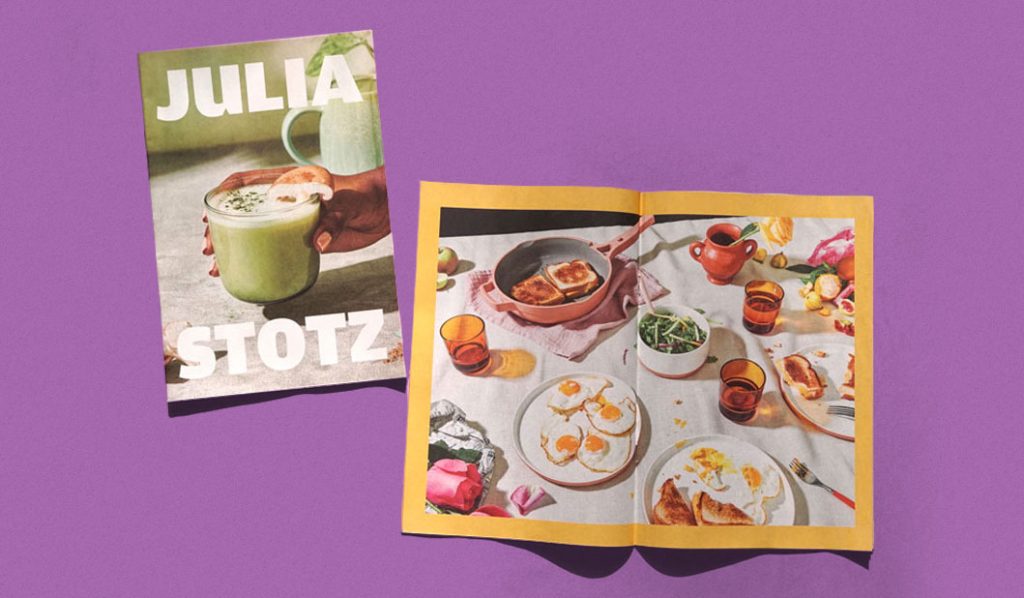
Julia Stotz tried many different creative jobs before discovering her niche in food photography. Today her vivid, playful images set the tone for some of the most exciting new cookery brands, including Brightland, Our Place and Dripkit, and her editorial work is featured in The New York Times, Bon Appetit and Eater.
"I love how still life can catch little moments in time," says Julia, who printed a portfolio of her food photography on our digital mini newspapers. "I want people to be immersed in the imagery and feel like they’re looking into an intimate moment."
Below, Julia talks about capturing the perfect whipped cream peak, the thrill of operating a $1 million camera jib on a shoot for UberEats and why it's important for her to make a printed portfolio every year.
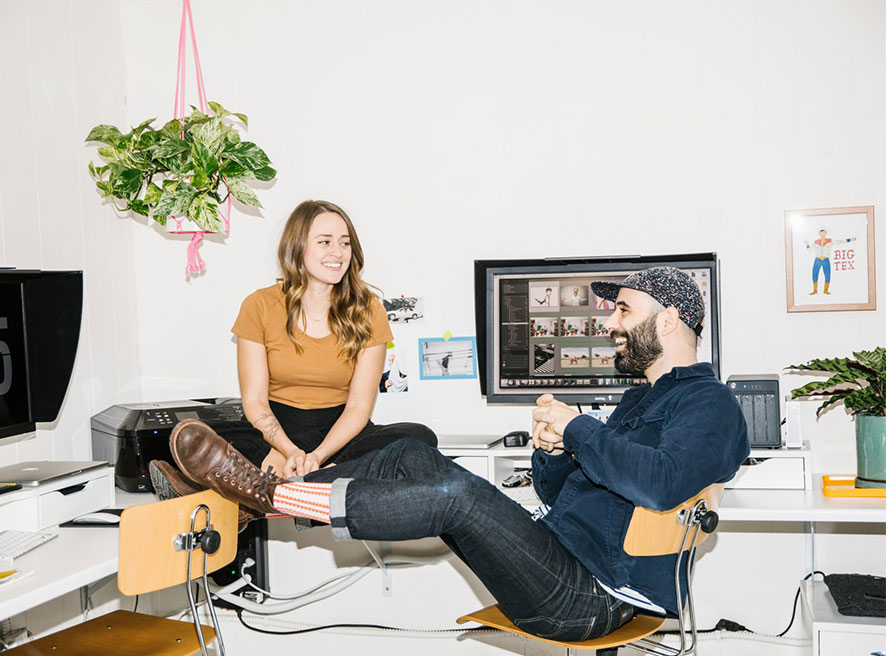
DISCOVERING THE DARKROOM
I grew up in Northern California and started photography in high school. My dad had a Nikon FM and I used it to take black and white film photos, which I’d develop and print in the darkroom. In college I studied a different major but quickly realized that I wanted to pursue photography professionally.
I got my BFA in photography at Columbia College Chicago and then stayed in Chicago for 8 years. I began my career there with the freedom to try lots of different photography styles and small jobs. I tried working part-time at a gallery, with an artist, at an after school program, and assisting commercial photographers.

PERFECT TIMING AND MESSY PLATES
I’ve been working as a freelance commercial and editorial photographer for over 10 years now. Some of my first clients were smaller jobs for publications such as Timeout Chicago, Paper Magazine, and Dwell, and I eventually started getting bigger clients like Kraft Cheese, The New York Times, and Airbnb.
I moved out to Los Angeles about 6 years ago and that really pushed me to define my photography style. I think the aesthetic of LA’s food scene has really helped my career and the type of work I get out here — happily, most of my work these days revolves around food! I’m obsessed with all types of food and love cooking and bringing people around a table. I love how still life can catch these little moments in time.
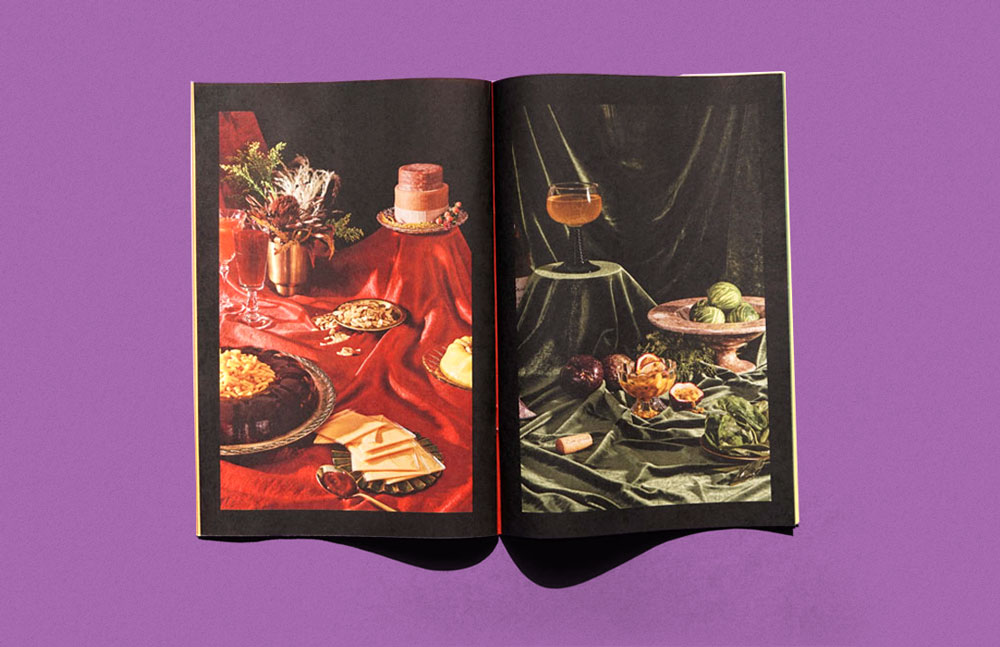
Food inspires me both visually and with its storytelling. It opens doors to other cultures and is something that is close to people’s hearts. Food photography can be labor intensive and it’s all about timing — getting the perfect whipped cream peak, but also getting the messy finished plate. But these are the types of challenges I love on set.
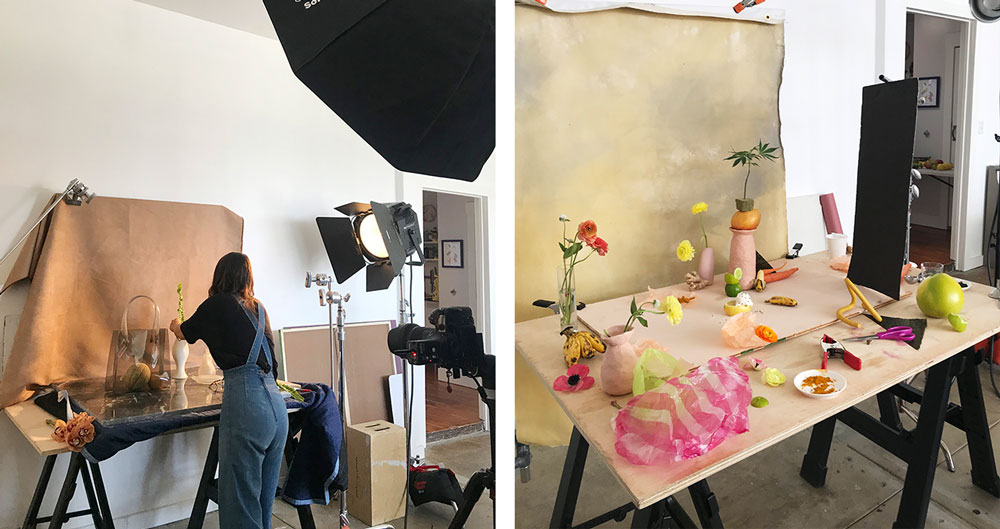
IT TAKES A VILLAGE
I don’t have a typical workday — every day is different depending on what needs to get done — but I generally have 2 different types of days: one where I’m on set shooting and other days where I’m at the studio working on office stuff.
On shoot days, I work in my own photo studio when the job isn’t very big, or I’m on location at a rental studio somewhere in Los Angeles or elsewhere. I almost always work with prop stylists and food stylists, but my crew also usually includes photo assistants, a digital tech, producer, PAs, hand talent, retouchers, and occasionally wardrobe stylists and hair and makeup.

Most of my photoshoots are very collaborative and need a lot of talented people to come together. That was the main reason I went into commercial photography — I wanted a chance to work with lots of people, all specializing in different things.
My husband, Brian Guido, is also a photographer who I met and befriended in photo school. We’ve been together for almost 12 years and we’ve helped each other grow independently while sharing a studio. It’s great because I always have a studio-mate who I can discuss projects with and give or get input. We rely a lot on each others’ opinions and advice for our separate practices.
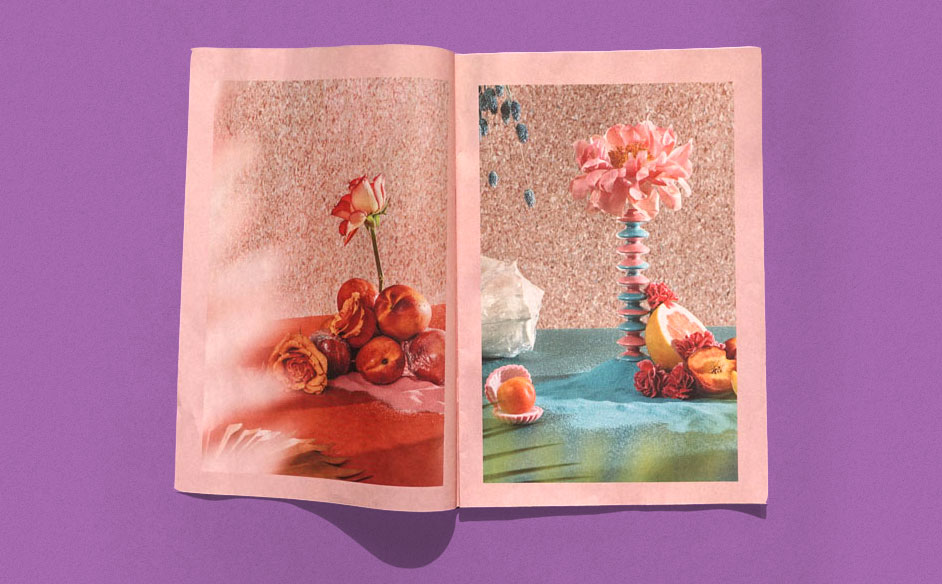
FOR THE LOVE OF PRINT
My background making books makes me really love the format of printed promos in commercial photography. I don’t get to see my work in print that much anymore, so it’s really special to create a tangible portfolio. I try to make one every other year to send to clients and then I keep some copies for meetings and send some for my agent, I Heart Reps, to share.
I also send out an email promo once or twice a year to a larger client list, but since my work is primarily shown online and on social media, the print piece is really important to me.
I’ve printed my promos using lots of different methods — I’ve made postcards, foldouts, booklets. But I really like the small format and the casual feel of the mini newspapers from Newspaper Club.
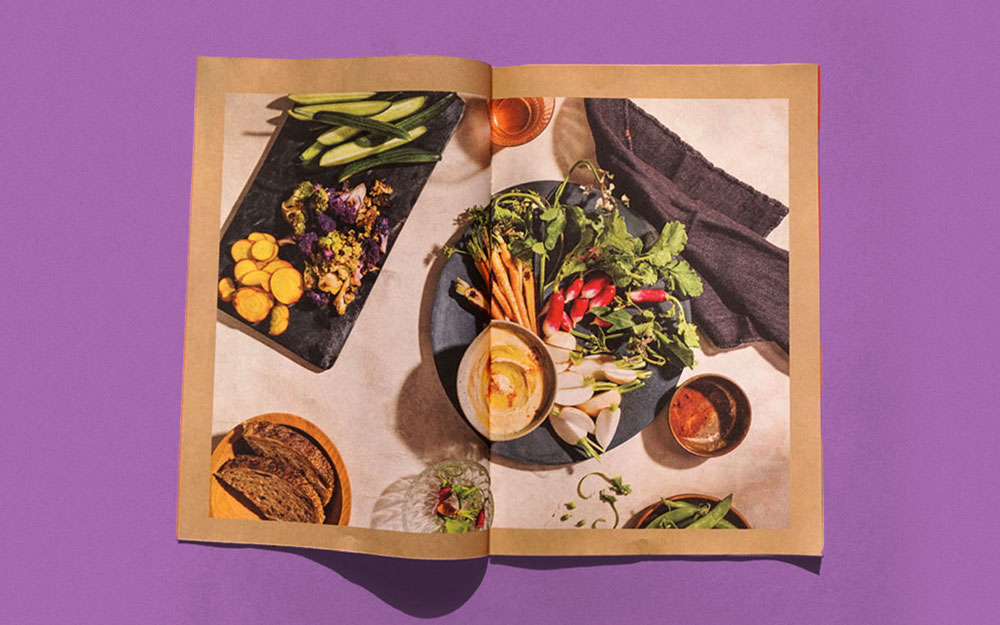
The work in my newspaper is a mix of personal projects created with some of my favorite prop and food stylists and commercial projects for clients including UberEats, Bacardi, Sweetgreen, Brightland, The New York Times and Bon Appetit. I wanted to show a range of different projects, but curated for the style of work I want to do more of in the future.
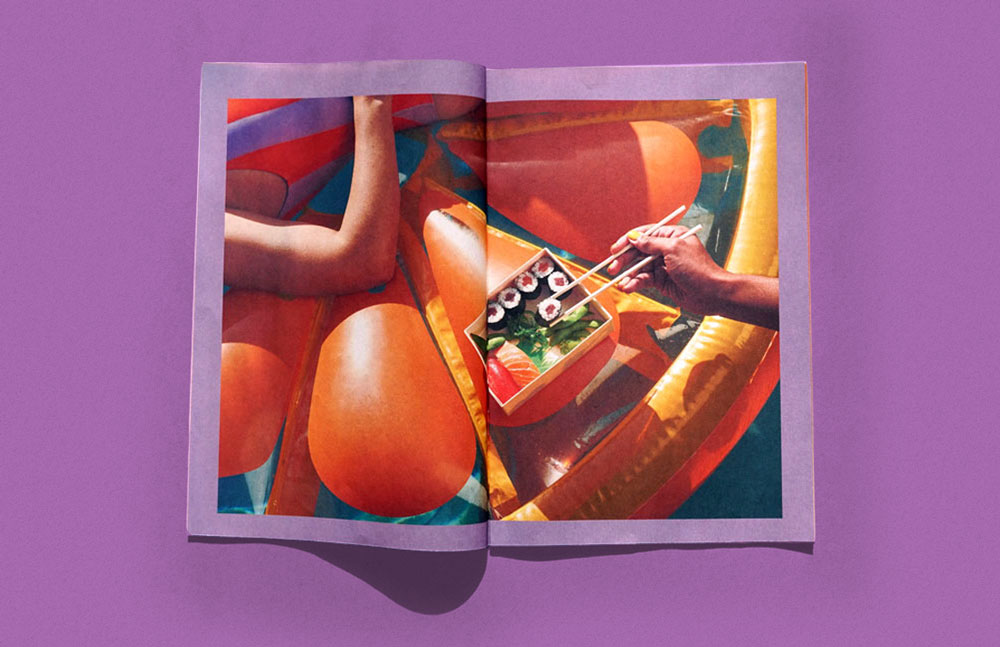
I want to highlight two very different images from my newspaper. The first is the UberEats shot with the people in the pool eating sushi (above). This was a commercial set that was at a home location and I had a very small window of time to shoot this scene.
There were 50 or more people on the set — video crew, wardrobe, food stylists, hair and makeup, catering, location scout, the client. The only way to get the final shot was by using a motorized camera jib that was craned over the talent and the pool. The jib was worth over a million dollars and I got to control it with a little joystick! It was super fun being able to try something totally different for a shot.

The second shot is the marbled series with food (above). This one was a personal project that I worked on with food stylist Maya Bookbinder and prop stylist Samantha Margherita.
We spent an entire day outside marbling anything we could get our hands on: paper, cups, bread, fruit, fake flowers, real flowers. It was so nice to create strange objects for the joy of it. Then we got to spend a whole day shooting just a couple photos just for fun. There was no creative brief and no client, just the three of us playing at my studio. We had free range to get a little weird and spend quality time on each shot until we were happy with the final series. Personal projects like these really drive future shoots, because a client or agency will see them and want to create photos with a similar feel.
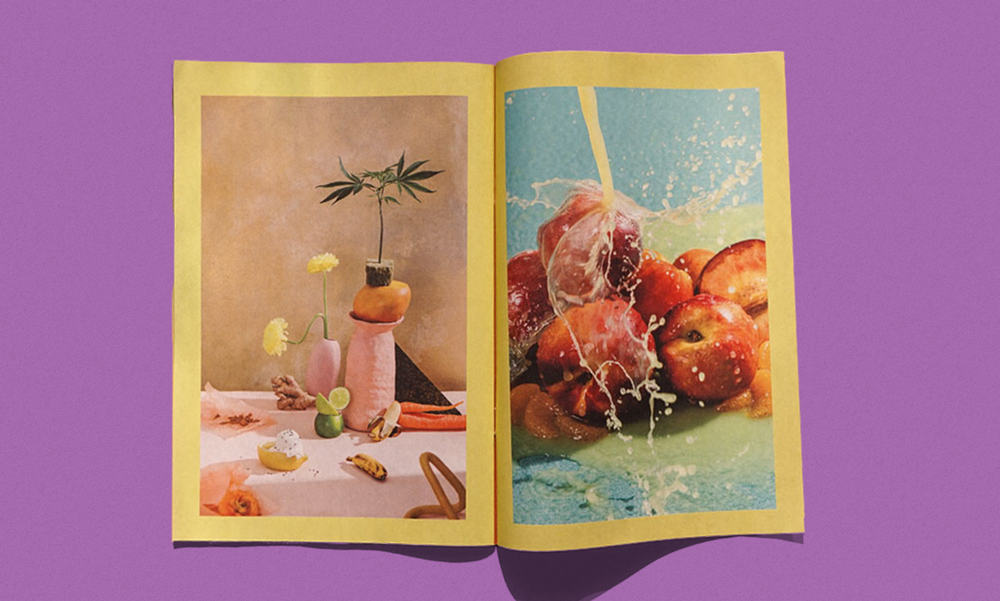
SMALL BUT MIGHTY
The newspaper has gotten a really positive response. I’ve heard how nice the paper makes my images feel, which I agree with. People have said they loved the sense of being drawn into the color-scapes and diptychs. I also love how light and easy they are to keep in my bag and hand out.
I was originally wary of using newsprint because my photographs are so vivid and colorful, but the paper really added a beautiful quality to the images. It makes them feel contemporary yet timeless, dreamy and soft while still having a bright pop.
I also think the scale is really important — I want you to be immersed in the imagery and also feel like you’re looking into an intimate moment. The mini newspaper was a perfect fit for how I wanted to display my work. I just shipped out my biggest batch of mailers to clients this week, so hopefully I’ll get a good response with the packages as well!
Print your own newspaper with Newspaper Club.
The first issue of Deluxe was, in Rupert Morrison’s words, “lumpy.” He’s the owner of Drift, an award-winning record shop in Totnes – not...
Spring is in the air and a new season of print is upon us! In this roundup, we've got a creative pick-me-up from Papier, a peek behind...
As Newspaper Club’s digital product manager, Billy Whitehouse spends his days helping others bring their print ideas to life. But...